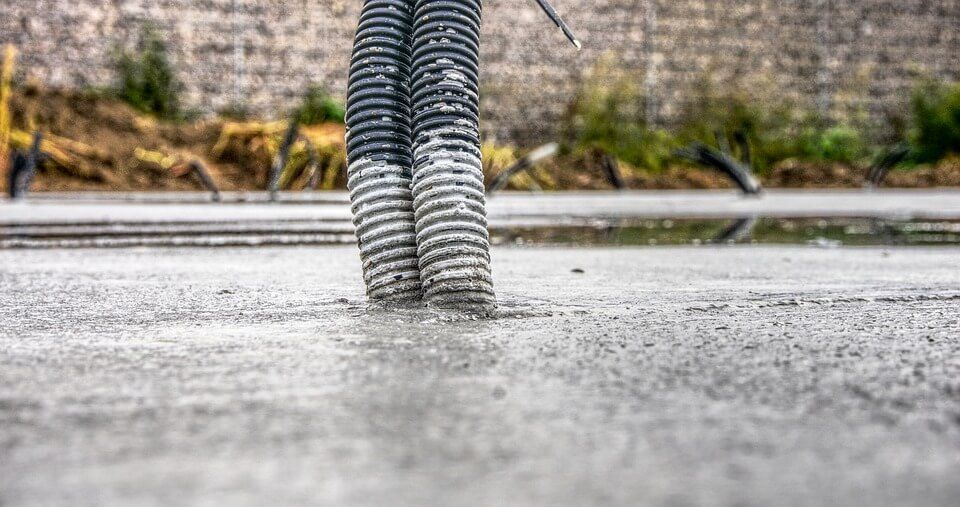
How to Ensure Optimal Concrete Ready Mix Strength Through Proper Compaction
You know how to mix and pour concrete. But have you learned how to compact it?
The concrete compaction ensures optimal density and strength, not to mention an excellent surface finish.
That said, a smooth surface does not always mean the concrete underneath is properly compacted.
We’ve put together a helpful guide to teach you how compaction works, and how you to ensure you properly compact a poured concrete ready mix.
What Is Concrete Compaction?
The compaction of concrete removes entrapped air from freshly poured concrete. It also packs the aggregate particles of the concrete mix together. The result is a stronger, denser concrete with low permeability.
How is Compaction Done?
Tamping concrete is a common compaction method on many job sites, but using vibration is by far the most efficient method for long-lasting concrete that looks great. Concrete construction projects often use external, surface, or internal vibrators for concrete compaction.
Internal Vibrators
Internal vibrators are the most common means of compacting concrete through vibration.
These vibrators must be placed vertically into poured concrete. The vibration action helps bring air bubbles to the surface of a poured slab. Once the air bubbles stop surfacing, place the machine in another area of the concrete slab.
You must move systematically throughout the slab until you achieve proper compaction.
External Vibrators
External vibrators are frequently electric or pneumatic devices mounted to the exterior of a work form. These cover a much larger area than other vibrators and are usually spaced 6 feet apart from each other.
External vibrators are ideal for walls and beams and should be run long enough for air bubbles to escape.
Surface Vibrators
Surface vibrators work from the top surface of the concrete, compacting the surface and what’s immediately below it. Contractors may use these with a screed to help level and finish the surface.
Depending on slab thickness, you may use a variety of surface vibrators during a given job.
The Compaction Process
The proper compaction of concrete is a two-stage process that requires slumping and removing trapped air.
Stage 1 – Slumping & Liquefaction
When concrete is first placed, aggregate particles arch against each other. This prevents slumping by internal friction.
But an immersion vibrator will:
- Move these particles around (liquefy);
- Consolidate (slump) the concrete to fill its form; and
- Provide a level surface.
This stage takes about 3 to 5 seconds to complete.
This stage provides a smooth level surface. But the compaction process is not complete until the trapped air has been removed.
Stage 2 – Expel Entrapped Air
Newly placed concrete of normal mixes (not mixes with very low or high workability) contains between 5% and 20% by volume of entrapped air.
An immersion vibrator will bring these trapped air bubbles to the surface of the concrete. This process takes about 7 to 15 seconds to complete since it takes a bit longer for entrapped air to rise to the surface.
Once air bubbles no longer appear on the surface of the concrete, the compaction process for that area of the concrete is complete.
What Can Happen to Concrete That Is Not Properly Compacted?
Both under- and over-vibration of concrete can lead to quality issues. However, under-vibration, or no compaction at all, poses far more problems for poured concrete.
Concrete loses compressive strength and becomes weak if it’s not properly compacted, and the risk of defects in the concrete is greater.
Common defects from poor-quality concrete include cracks, concrete honeycombing, and concrete spalling.
The low compressive strength is unable to withstand heavy weight, such as that from vehicles or structures resting on top of a foundation.
High permeability, meanwhile, allows moisture to seep in and saturate the concrete. This can lead to cracking, especially in winter when the moisture freezes and expands.
How to Avoid Under- and Over-Vibration
To avoid defects in the properties of concrete, you must use the appropriate type and amount of vibration.
The concrete mix needs to be properly proportioned. Mixes lacking fines (stiff mixes) are more difficult to compact and are more porous. Mixes with too high a fines content are prone to segregation and excessive bleeding, especially if they have a high slump.
It’s difficult to over-vibrate mixes that are properly proportioned, but you should take care to not under-vibrate these mixes, either.
Stiff mixes with lower workability need more energy for proper compaction, so use a high-energy vibrator or you should vibrate the concrete for a longer period of time. Either way, the vibrator should have enough power to liquefy the concrete.
Concrete mixes with higher workability need less energy for proper compaction.
The properties of the coarse aggregates in the mix, such as size and angularity, also affect your compaction efforts. Larger and more angular aggregates need more effort to compact than smaller aggregates with smooth or round edges.
When and Why You Should Compact Concrete
You should compact concrete immediately after pouring and placing the concrete in a form.
Freshly placed concrete typically contains 5% to 20% entrapped air (air voids). The higher the percentage of trapped air, the weaker the finished concrete slab will have.
Freshly-placed ready mix concrete that contains 10% entrapped air could have 50% less strength than properly compacted concrete.
The proper compaction of concrete is necessary to maintain the concrete’s structural integrity and gain optimal strength. The many benefits of concrete compaction include:
- An increased ultimate strength of the concrete product;
- A stronger bond between the concrete and its reinforcements;
- Increased durability and resistance to abrasions;
- Decreased permeability, reducing the risk of cracking and spalling;
- A reduction in shrinkage characteristics; and
- A reduction in other forms of cracking.
The proper compaction of concrete will lead to durable, long-lasting concrete.
Keep these tips in mind for your next concrete project, and order proportionately-mixed concrete from your ready mix supplier.
